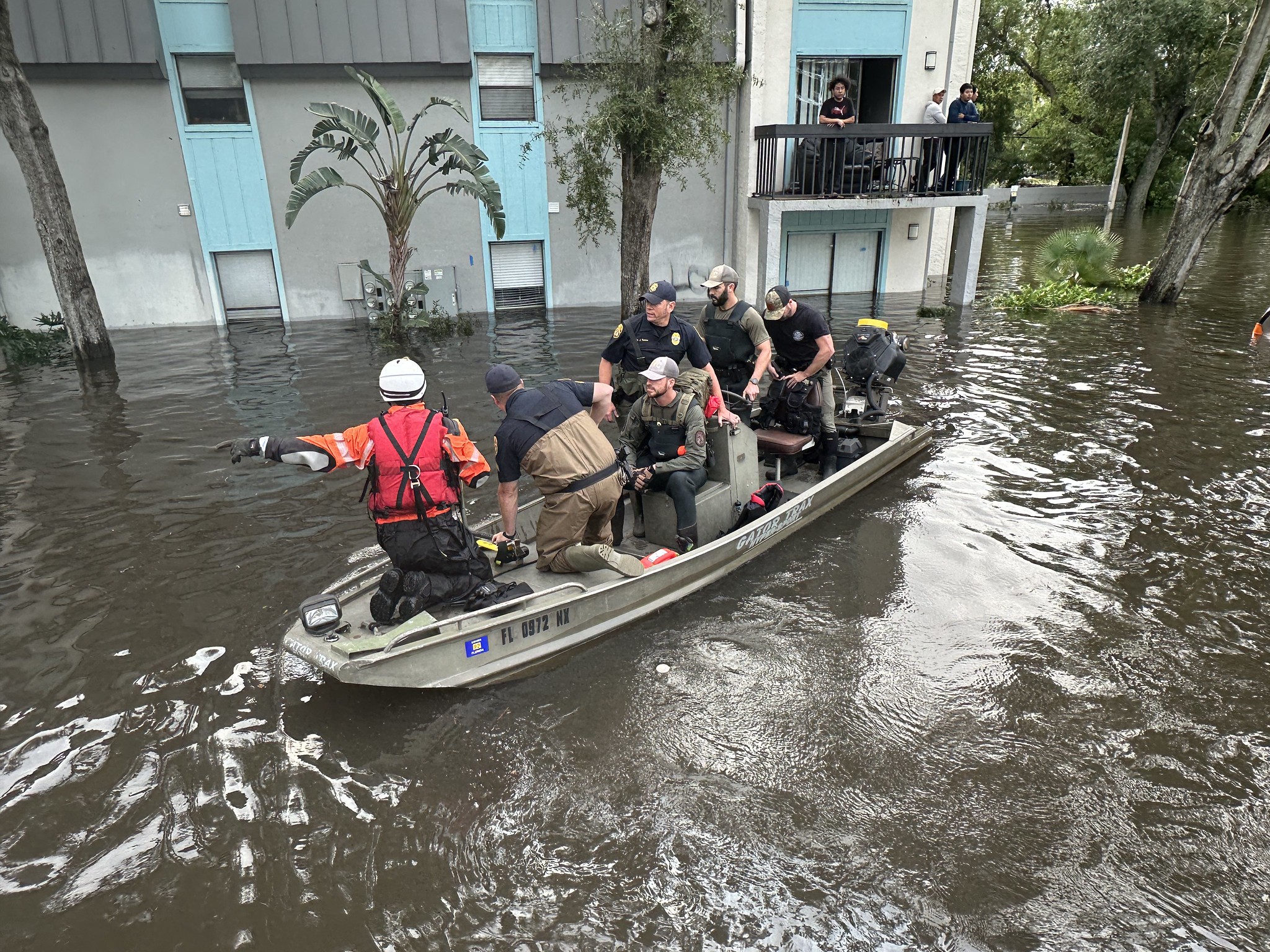The past couple of weeks have seen devastation rained down on Americans from Florida to the Appalachians of western North Carolina and East Tennessee. And with climate change making hurricanes, and natural disasters generally, more severe and frequent, we need to take a hard look at reorienting policy to make the nation more prepared and more resilient to these dangers.
For a start, as I argued in The Hill, the director of the Federal Emergency Management Agency (FEMA) should be elevated to a cabinet-level position. Symbolically, it shows a recognition of the increasing importance of disaster preparedness and management. Practically, it would give the director more of a direct line to the president, boost FEMA’s profile, and make sure that emergency management is involved in decision making, even when things are calm.
Specifically, I urged Vice President Harris to make this promise on the campaign, along with saying she would move FEMA out of the Department of Homeland Security. Whoever the next president is should, at minimum, elevate FEMA’s director to cabinet-level. We’re aware that Trump is currently smearing FEMA after having wrecked havoc on the agency in his own term. And we have most definitely read Project 2025’s call to completely gut FEMA. Nonetheless, the suggestion applies regardless of the identity of the President–coordination response to disaster is important, and org charts have impact on material outcomes.
Reorganization, however, is just the start.
We have a tendency to think of policy areas as discrete buckets that can be tied to specific federal agencies. Economic policy is Treasury, Commerce, etc. Environmental policy is the EPA. And so on and so forth. In reality, though, it’s a lot messier. People don’t think of climate research or socio-environmental disasters as the ambit of the Department of Commerce or the Department of Homeland Security, but that’s where the National Oceanic and Atmospheric Administration (NOAA) and FEMA, respectively, are housed. Most people probably don’t know that the vast majority of Department of Transportation employees work in air traffic control, even as American mobility remains dominated by automobiles.
That’s why, even though it can seem weird initially, to talk about disaster preparedness and resiliency, we need to talk about financial regulators like the Fed—and how Jay Powell has blocked critically needed changes.
When most people think about the Fed, they think about monetary policy and setting interest rates. However, in terms of the total work hours being done by the Federal Reserve System (Board of Governors plus Regional Fed Banks), there’s a lot more financial regulation than anything else. And one of the fundamental parts of financial institution regulation is ensuring that financial institutions have good risk management.
Climate change and worsening disasters both create a lot of risk that we historically have done a bad job of hedging against. This is why there’s a growing insurance crisis, with more companies withdrawing home insurance offerings from states with elevated natural disaster risk. These are risks in both human and financial terms. If a hurricane hits a key manufacturing facility, say one that produces IV solution, it can cause damage to that business. In terms of personal damages, the employees’ ability to work and earn a living is damaged, some of them may have been in the factory and been injured, and many who live nearby could have lost their homes. That’s how we typically think about the damage of socio-environmental disasters. And that’s good! Compassion and empathy are virtues.
But we think a lot less about the fact that now that company will have lost physical capital, potentially human capital if workers move away because they lost homes or can’t tolerate the risk of living in the area, projected future earnings (which could have been used as leverage for better borrowing terms or, worse, could already be leveraged), and market capitalization. Investors holding their stock will suddenly have less money than they did. Multiply this across dozens, hundreds, or more businesses and you see a serious economic blow. (Plus consider every firm that relies on those businesses as suppliers, all of which will now have to pay more to get their required inputs.)
Similarly, imagine a bank in Asheville that mostly worked in issuing local home mortgages and commercial real estate. Because of the storm, all of your loans are riskier, many will now be functionally unsecured because the collateral is destroyed or devalued, and you have to offer worse terms to borrowers. If enough banks are hit by these conditions, you can have the start of a financial crash.
Risk management and insurance are supposed to spread out the harms of this type of situation, but current risk management regulation doesn’t require sufficient hedging against climate disasters while many insurance companies are simply leaving the affected areas.
All of this is why you get things like a case for the Fed to establish a hurricane crisis center and amazing work from my colleague Kenny on the breakdown of insurance markets and Powell’s blockading of critical reforms at the Fed. Particularly troubling is his weakening of the proposed Basel III framework and the slowdown of clean energy buildout. I strongly recommend that you read his work if you find this interesting.
I know that it sounds weird that the Fed has a key role to play in climate policy, but when you combine the financial impacts of climate change and the mechanics of what the Fed’s workload mostly consists of, it is a rather undramatic conclusion.
The above photo by Florida Fish and Wildlife is licensed under CC BY-NC-ND 2.0.

